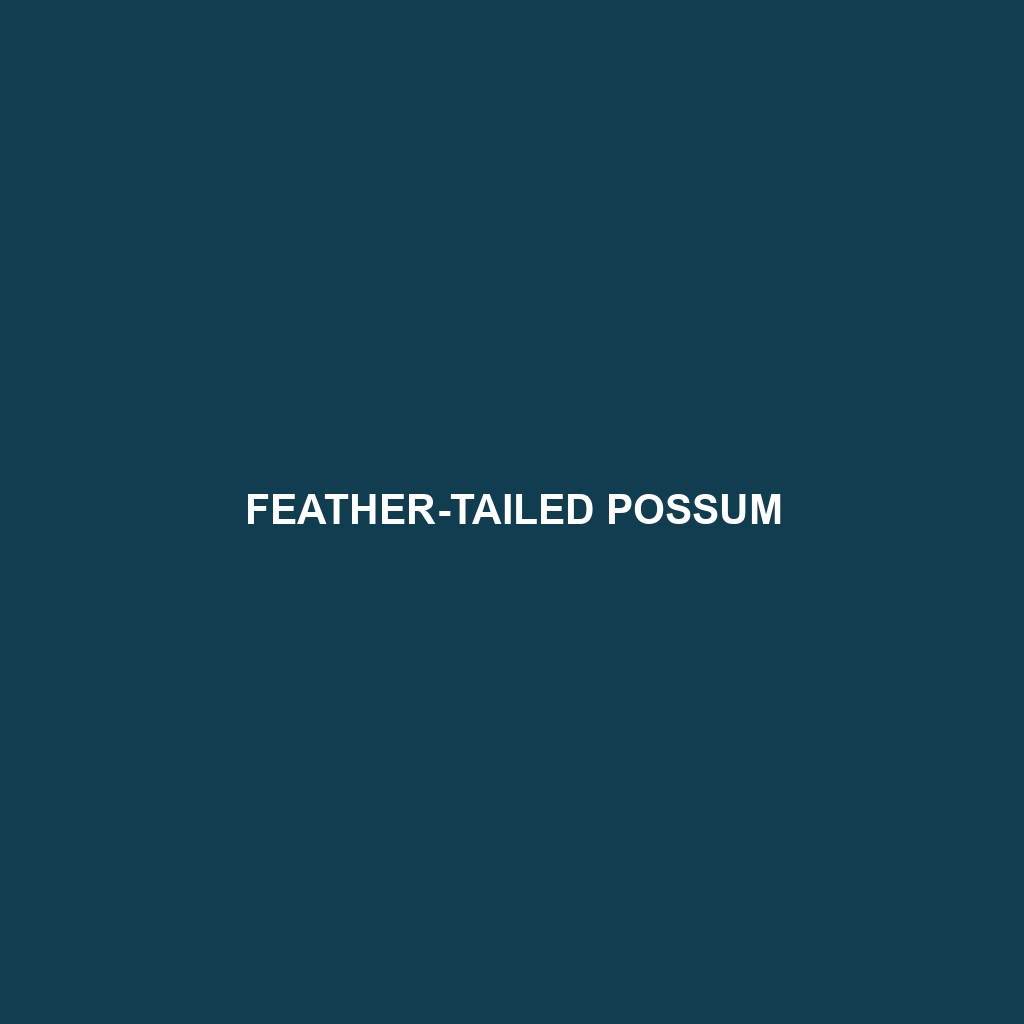Feather-tailed Possum (Distoechurus pennatus) Detailed Description
The Feather-tailed Possum, scientifically known as Distoechurus pennatus, is a unique marsupial native to the rainforests of New Guinea. This small, nocturnal creature is named for its distinctive feather-like tail, which sets it apart from other possums. With its endearing appearance and fascinating behaviors, the Feather-tailed Possum is a captivating subject of interest for both researchers and wildlife enthusiasts.
Physical Characteristics
Size: The Feather-tailed Possum is a small marsupial, measuring approximately 10-15 cm (4-6 inches) in body length, with an additional tail length of around 12-18 cm (5-7 inches). They typically weigh between 20 to 40 grams (0.7 to 1.4 ounces).
Coloration: Their fur is generally a soft, grey to brown color, providing excellent camouflage among the trees. The underbelly is lighter, often a creamy white.
Special Features: The most notable feature is their tail, which is long, slender, and has a unique feather-like appearance due to the arrangement of scales and bristles. This tail is prehensile, helping the possum to grasp branches and navigate its arboreal habitat. They also possess large eyes adapted for nocturnal vision, and sharp claws that aid in climbing.
Behaviors
Social Interactions: Feather-tailed Possums are generally solitary animals, though they may occasionally be seen in pairs or small family groups. They communicate through a series of vocalizations and scent markings.
Feeding Habits: These possums are omnivorous, primarily feeding on insects, nectar, fruits, and small vertebrates. Their agile and nimble nature allows them to forage effectively among the treetops.
Ecological Roles: As both prey and predator, Feather-tailed Possums play a crucial role in their ecosystem. They help control insect populations and disperse seeds, contributing to the health and diversity of their rainforest environment.
Habitat and Adaptations
Habitats: The Feather-tailed Possum is predominantly found in the tropical and subtropical rainforests of New Guinea. They thrive in dense, humid environments with abundant tree cover.
Adaptations: Their arboreal lifestyle is supported by several adaptations:
Prehensile Tail: The feathered tail aids in balance and navigation through the trees.
Nocturnal Vision: Large, sensitive eyes provide excellent night vision, essential for their nocturnal activities.
Climbing Abilities: Sharp claws and a lightweight body enable them to climb and maneuver adeptly among branches.
Conservation Status
The current conservation status of the Feather-tailed Possum is not well-documented, due to the relative scarcity of comprehensive studies. However, habitat destruction and deforestation pose significant threats to their population. Conservation efforts focus on preserving their natural habitats and mitigating the impacts of human activities.
Fascinating Fun Facts
The Feather-tailed Possum’s tail is so dexterous that it can be used to pick up small objects, much like an extra hand.
These possums have a unique grooming behavior, using their specialized tail to clean their fur and maintain hygiene.
Unlike many other possums, the Feather-tailed Possum is an excellent glider, capable of making short, controlled leaps between trees using its tail for balance and direction.
This detailed description aims to provide a comprehensive understanding of the Feather-tailed Possum, highlighting its distinctive attributes and the vital role it plays in its ecosystem. By learning more about this fascinating marsupial, we can better appreciate and contribute to its conservation.
